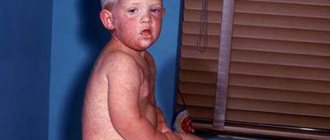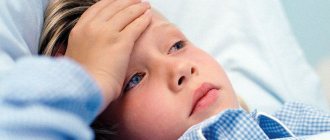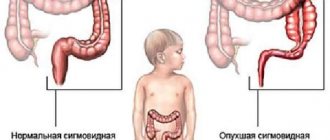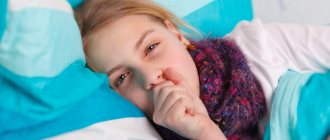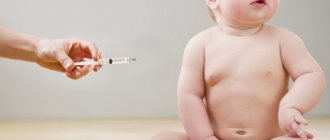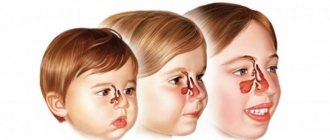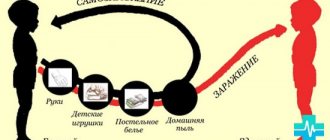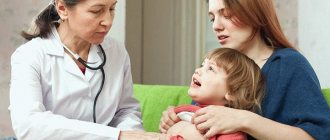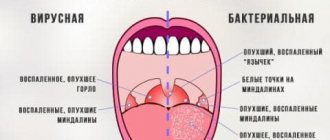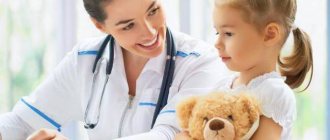Sooner or later, every mother is concerned about the issue of nits in her child. Children from prosperous families, where hygiene standards are observed, are also not immune from dermatological disease. In the fight against it, the main thing is to be able to use information and not panic.
Who are we dealing with?
Small insects that live on human hair are called lice. In children they live only on the head. They reach no more than 4 mm in length. Painted gray-white or red-brown. They look unpleasant. They move very quickly on three pairs of legs, and contrary to popular belief, they cannot jump or fly. The female is usually larger than the male.
Lice feed on human blood; animals are not suitable for them. They live for two months and reproduce quickly. The fluid they release into the victim's skin causes itching, discomfort and can even lead to illness.
Without hair, the insect cannot survive for two days, so it quickly finds another host. It can be transmitted in a variety of ways, but is usually through direct head-to-head contact. A large concentration of lice is usually in the back of the head and behind the ears, where children's hair is thickest and therefore warm. Here you can find their eggs packed in a sticky substance - nits. They are difficult to recognize, especially in blonde hair, so effort must be made to eliminate them.
Fighting lice in children
Children's skin is more delicate than that of adults, so lice in children should be treated carefully. Treatment of the disease is a complex of measures:
- Mechanical treatment of the hair, which includes combing with a comb, selecting nits by hand;
- Medicinal treatment using modern drugs containing substances harmful to insects;
- Washing head;
- Processing of clothes and bed linen.
If a child is severely infested with lice, the doctor may recommend cutting off the hair completely. For boys and babies, this may be the simplest and most effective treatment, but in the case of girls, you need to be patient.
When using medication, it is important to choose the medications recommended by your pediatrician. Some drugs can cause allergies or burns, so it is best not to do it yourself.
In order not to look for information about why children get lice, you must follow several precautionary rules:
- Regularly examine your hair to identify the disease at the primary stage;
- Girls should braid their hair in tight braids, which will make it difficult for an insect to move if it lands on a child’s head;
- Change bedding regularly and wash clothes thoroughly.
If head lice is detected in a child, it is necessary to examine all family members and report the disease to the school or kindergarten. This measure will prevent the massive spread of parasitic infection.
Nits in children. What is this?
The appearance of nits is similar to dandruff. They have an oblong oval shape, about 1 mm in size, light, almost transparent. The adult female attaches them with an adhesive substance that is difficult to remove, one per individual hair. The distance from the root is usually 2–3 cm.
Over the lifetime of a louse, it can lay 200–300 eggs. It lays 5–10 pieces per day. After a week of existence, a new small insect hatches from the egg - a nymph louse. It takes 2-3 weeks before she reaches puberty. Unfavorable conditions can delay egg development for up to 1 month. The delay occurs at temperatures below 22 degrees and above 40. They die in frost and at 45 degrees of heat.
It should be noted that the nit is precisely the shell of the egg and does not in any way affect the development of the larva and its nutrition. The so-called cocoon, which has a lid at the top. The larva emerges through it. Empty and full nits cannot be distinguished with the naked eye. It is difficult to remove and can be eliminated on its own only with hair loss.
What do lice look like on children?
Lice are arthropod insects that lead a parasitic lifestyle. The size of an adult does not exceed 0.6 mm, it has a small chest and head, and a rather large abdominal region. In ectoparasites, the organs of vision are either absent or presented in the form of two pigment spots, which are simple eyes. The insect's vision replaces its sense of smell; for this purpose, its entire body is covered with special tiny hairs.
The parasite's oral apparatus has the shape of a retractable proboscis, which is hidden in the head section. In the soft tissues there are modified jaws in the form of stylets, necessary for puncturing the skin. Bloodsuckers are securely attached to the host’s body during feeding, which is facilitated by special hooks at the end of the soft tissue of the proboscis.
Insects cling to human hair using six legs, which have hooks at the ends.
The lifespan of ectoparasites of this species is about 38 days. During this time, an adult female can lay more than a hundred nits, which she attaches to the base of her hair and threads of clothing. The period of egg maturation ranges from 4-8 days at a temperature of 36-37 degrees. If the eggs ripen on clothing, the development period of the embryo is extended to 16 days. At temperatures above 44-45 degrees, nits and adults die.
How dangerous are lice and their eggs?
The most unpleasant consequence of nits is a living louse. This is what harms the child:
- Unpleasant itching of the scalp;
- Allergic reaction;
- Infection of wounds and scratches;
- Pustular and ulcerative lesions;
- Lead to loss of sleep;
- Poor concentration;
- Absent-mindedness and irritability;
- In rare cases - relapsing and typhus.
Lice infestation is medically called pediculosis.
The danger of contracting serious diseases does not lie in the insect bite itself, but in the contact of the damaged area of skin with feces and fluid formed after crushing the louse. Nits do not cause any unpleasant sensations other than discomfort and a feeling of a dirty head.
Advice! Before exterminating lice, it is recommended to make sure that they are the cause of the discomfort. The presence of other parasites may slow down the healing process.
After exterminating nits and lice, the main thing is not to forget to treat wounds and scratches on the head from insect bites. Self-medication can be harmful.
You need to visit a dermatologist. He will select the best products for different skin types. Usually the doctor prescribes antihistamines. Wound healing balms are popular. In rare cases, after severe infection, ultraviolet irradiation is suggested.
How does a nit appear on a child's head?
The nit cannot get to another person on its own, since it does not move. In exceptional cases, during close contact, it can get on a healthy person’s head along with lost hair.
It is also possible to send it along with a hat, an elastic band, a comb or a bobby pin. Therefore, it is recommended to make these items personal items.
Children are more likely than adults to be in groups. Schools, kindergartens, sections are places where there is long-term contact with other children and often the cause of the appearance of parasites. During play, the parasite quickly finds another host, so head lice is usually treated for the entire class.
Lice move quickly and upon contact with an infected person, there is a greater chance of bringing them home.
It is not difficult to identify nits in a child. Just watch him. If you are worried about scabies, you urgently need to arm yourself with a magnifying glass and look for insects and their larvae.
How to find lice on a child?
You can determine that a child has become infected with lice by the following signs:
- The child constantly scratches his head;
- Redness at the sites of bites is visible on the neck and scalp;
- There are whitish specks or nits on the hair, which are often confused with dandruff.
The easiest way to identify a lice infestation is when washing your hair. The insects begin to move slowly, and it is not difficult for an adult to see the parasites upon careful examination of the skin. Pediatricians recommend conducting a thorough examination of problem areas at the first alarming symptoms. This applies to the area behind the ears and the back of the head. It is important to use a fine comb to comb your hair. It is necessary to place a light-colored blanket or sheet on the child’s lap so that insects can be better seen.
In one-year-old babies, the presence of ectoparasites can be determined by profuse rashes, scratching and a nervous state. Nits and adult insects are clearly visible in the sparse hair of the baby. Due to the early age, if a child is diagnosed with lice, only a doctor should decide what to do. Self-treatment in such children can cause negative consequences.
Prevention of nits
The main rule of prevention against pediculosis is regular, conscientious observance of personal hygiene rules. This means washing the body more than twice a week, frequently changing linen (bed and underwear). But even fulfilling this condition does not guarantee 100% results. It is a scientifically proven fact that lice love clean skin and choose a person who washes their hair frequently. It is easier to suck blood on such a head because there is less secretion from the sebaceous glands.
It is recommended to check the child's head for parasites and nits at least once a month. It is during this period of time that the incubation period passes and they are easiest to detect and remove. It is better to wash bed linen in water at high temperature, and iron clothes after washing with a hot iron in places, especially at seams. It is important to explain to your child about the disease and teach him to avoid close physical contact with other children. Also explain the importance of personal belongings and do not allow the comb to be shared so that the treatment is not wasted.
To prevent head lice, after washing your hair, you can treat the back of your head and the area behind your ears with tea tree extract or lavender oil. At night, you need to dry your hair well with a hairdryer, and not leave it wrapped in a towel.
To check for parasites, you need to comb your hair over a light-colored cloth. Dark lice will certainly be noticeable, which means that nits will soon appear.
Child examination and disinfection
It is worth examining the child once every 7-10 days. Lice and nits are easy to detect during an external examination of the head. When the infection is severe, the hair appears covered in grit or dandruff due to nits.
Usually they start by examining the temples and the back of the head (for bites), then check the scalp for lice (most often they can be found behind the ears or on the back of the head ) and then look for nits on the hair (approximately 2-3 cm from the skin ).
If you find lice on a child, reassure him: explain that this is not dangerous to his life. Tell him about preventive measures: you cannot take other people’s combs and hats, as well as hairpins, elastic bands and other hair accessories. Check other family members for parasites.
After treatment: disinfect the room; clothes and bedding must be washed and ironed; and report the infection to the sanitary services in order to prevent the spread of head lice.
You can treat head lice in children using folk remedies: vinegar, kerosene, essential oils, including tea tree oil, tar, laundry soap; or use medications such as sprays against lice and nits - Nyuda, Paranit, Pediculen Ultra, as well as Benzyl benzoate and Sulfuric ointments. You can also read about preventative measures on our website.
Nits in a child: how to fight?
Lice and their larvae are much easier to remove from hair than to get rid of nits. They effectively protect eggs from external influences, and most products cannot destroy them. But treatment is necessary.
To detect nits in a child, you need to place his head on a towel under a high-power lamp and carefully examine the entire surface of the hair. It is especially recommended to pay attention to the occipital and temporal areas.
The most effective remedies against the shell of a louse egg:
- Vinegar and cranberry juice destroy the shell. However, excess acid can damage the skin and even cause burns. The solution must be made carefully.
- Vinegar diluted with water in combination with a lice comb. In this way it is possible to partially get rid of the misfortune. Complete removal will not occur.
- Full head shave. The method is radical. The treatment is the simplest. Bite wounds are easier to treat without hair, as is dry skin.
It must be remembered that nits are a consequence of the vital activity of lice. Therefore, the best method to get rid of them is the complete extermination of living insects. Considering that the larvae hatch after a week, the procedure for destroying lice must be repeated 3-4 times a month at equal intervals. The nymphs will not have time to reach sexual maturity, and not a single hairy inhabitant will remain.
Advice! When dealing with lice and their consequences, the main thing to remember is that insects can get on the hair of other family members. Therefore, you should wear protective clothing and check all households for parasites.
After the parasites have been removed, it is necessary to neutralize the child’s personal underwear and clothing using high temperatures. For two weeks after treatment, the child is prohibited from visiting public places. It is also necessary to inform the teacher about the problem so that a quarantine is declared in the group, otherwise all efforts are pointless.
There are three ways to rid a person of lice and nits: mechanical, chemical and folk. Each of them should be considered separately.
treatment of lice in children
First of all, don't panic. Try to limit his contact with other children. Secondly, look at the heads of other family members. Thirdly, decide what and how you will treat.
It is recommended that all family members undergo disinfection at once. In addition, you should wash all bedding and clothing in hot water. Lice and nits cannot withstand temperatures above 45 degrees.
There are 3 ways to remove lice: cutting your hair, folk recipes and pharmaceutical preparations. If you are not going to solve this problem radically, then you can use the last two remedies. Choose the most suitable option.
The simplest and most effective preparations are hellebore water and tar soap. They cost pennies, but are highly effective. We apply the product to the baby’s hair, put the bag on top and let him walk for about 30 minutes.
Then we thoroughly wash our hair, dry it and sit down to comb out the nits, since these products only kill parasites. In addition, you can use vinegar with water in a ratio of 1:8 or kerosene diluted with vegetable oil 1:6. The method of application is similar to the use of dust and hellebore water.
Pharmaceutical medicine can be in the form of a spray, shampoo, concentrate or cream. Most are made with permethrin, phenothrin, malathion or pyrethrin. Everyone will be able to choose a drug depending on the age of the children and their financial capabilities.
Among liquid solutions, Medifox, Foxilon, Medilis-Super and Avicin have proven themselves well. Solutions help to completely get rid of lice and kill nits from the first use.
You will still have to comb out the latter additionally, since even when they are dead they continue to cling to the hairs. A fine comb will help you deal with them easily.
How can you remove lice from a child using special shampoos? They are also applied to curls and left to act for some time. It is very convenient to use shampoos for children and adults with thick hair; the foam product is easy to distribute over the entire length.
These could be Pedilie, Parasidosis, Hygia or LiceGuard. True, most of them are effective only in combination with a comb, which usually comes with the drug.
Sprays are considered a good cure for lice for a child. They are easy to use and very effective against lice and nits. These can be “Paranit”, “Nyuda”, “Para Plus”, “Pedikulen”, “A-Par”.
However, it is recommended to use them in a well-ventilated area, as some have a very pungent odor. The products are simply sprayed over the entire length of hair and clothing, left for some time and washed off. Usually re-treatment is done after 10 days, during which time the child is protected from the invasion of new parasites.
Nyx and Nittifor creams are also suitable for children. They are applied to the hair and rubbed into the scalp for 15-20 minutes, then rinsed off. "Nix" is less dangerous for children, so it can be used at any age, and "Nittifor" only after 5 years.
These are the ways to treat lice in children. And yet, it would be useful to find out where these parasites can come from and what means of prevention exist.
Mechanical way to get rid of insects
The most effective method against nits is considered to be a fine comb. Special electric devices are sold for combing them out, but a regular comb will do. The main thing is to have patience, attention and a couple of hours of extra time.
However, it is difficult to remove nits simply by combing them out. They are firmly glued to the hair. Therefore, wet hair is divided into separate small strands. Then they need to be carefully combed out one by one, starting from the root, and pulled to the end. If the hair is very long, it is better to shorten the length, at least to the shoulders. Otherwise they will simply be distributed along the entire length. The procedure is carried out over a sheet or towel so that the nits can simply be shaken out into the street.
There are many specialized electric combs on the market today. But you don't need to pay attention to advertising. Often the value of the product is exaggerated. They are equipped with a narrow blade, which makes it difficult to comb out the full length of the strand. Designed for hair roots.
It is possible to completely get rid of parasites with a comb if you repeat the procedure several times a day for two weeks.
The second mechanical method is cardinal - shaving your head bald. But not every girl will like it. The method helps get rid of insects, but is dangerous for the child’s mental state. After getting rid of the hair, children in kindergarten or school can laugh at the victim, which will make the child withdraw into himself.
Mechanical methods are the safest for health. Combing is an effective treatment against lice.
Advice! To thoroughly eliminate insects and their nits, several methods should be used simultaneously. For example, chemical and mechanical. The effect will increase significantly.
Treatment of pediculosis in children
Once you have identified lice, you should think about what treatment for head lice to choose. Increasingly, parents are choosing pest control shampoos, but some opt for folk remedies.
On a note!
Not every drug from the pharmacy is suitable for a child. Children are sensitive to chemistry. A toxic product can cause severe allergies or burn the scalp.
If the disease is detected at an early stage, then a comb will help to cope with it.
Pharmacy products
Most often, the pediatrician prescribes a special anti-lice shampoo or spray for children. Before using it, you should read the instructions. It is better not to buy this product without a doctor's prescription. After all, a poisonous drug can poison a child.
The following medications are usually prescribed to children:
- NOC;
- Hygia;
- Nyx cream;
- Nuda spray;
- Para Plus remedy for lice and nits;
- Paranit;
- Veda shampoo;
- Lavinal;
- Full Marx.
On a note!
Nyuda is the only spray that can be used to treat children's hair. It does not contain insecticides and does not cause allergies.
After the first treatment, parents sometimes turn to the pediatrician because white lice remain in the head. But these are not the insects themselves, but their eggs. After seven days, the parasites will come out of them. Therefore, treatment with the drug is repeated after a week.
Nude product
Folk remedies
An effective insect repellent can be prepared in your own kitchen. The most commonly used recipes are:
- Hydrogen peroxide is mixed with water 1:1. The mixture is applied to damp hair. The head is wrapped in a bag and then a towel. After 40 minutes, the product is washed off.
- Tar soap is applied to wet hair, kept under the bag for 40 minutes, and then washed off.
- Vinegar 9% is diluted with water in a ratio of 1:3. Each strand is treated with vinegar solution. The head is covered with a towel and a scarf is put on top. After 40 minutes, the hair is washed.
Important!
It is prohibited to use kerosene or Dichlorvos to treat head lice in a child. These products can cause severe burns and poisoning.
Special comb
A lice comb helps get rid of insect nits. It is used both after pediculosis has been recognized and for the purpose of preventing the disease.
Before combing out lice and nits, it is recommended to treat the hair with water and citric acid: 5 g of powder per 250 ml of warm water. The composition softens the sticky mass, with the help of which the nit is attached to the hair and lice eggs become easier to comb out.
Fine-tooth comb
Review
I treated the child’s head with everything. The insects appeared again and again. The pediatrician advised me to purchase a special lice comb. They managed to comb out the nits, and the lice no longer bothered us.
Larisa, Ekaterinburg
The comb also helps to determine whether a child has lice. If nits and insects remain on it, then it is worth checking your hair and treating your head with an anti-parasite product. Hair is combed 4 times a day for 5 days. After combing, the comb is washed and treated with alcohol.
Will chemicals save the situation?
Modern technologies make it possible to painlessly reduce the number of insects, carry out complex treatment against them and completely remove them. Special products have been developed: sprays, shampoos, creams that weaken lice and even soften nits.
Chemicals must be used in accordance with the instructions. Improper use may harm adults and children. The product should be applied to the head, left for a certain time and rinsed off with clean running water. To destroy possible larvae, the procedure should be repeated after a week.
Some shampoos need to be removed multiple times to avoid leaving chemical residue on the scalp. After treatment with the drug, you need to remember that it poisons lice, but does not remove them from the hair. Therefore, it is recommended to additionally remove dead parasites.
Most shampoos are based on Permethrin. It is relatively harmless to humans and has a paralytic effect on lice. To carry out effective treatment, it is applied to dry hair, diluted with a small amount of water. Apply every 2-3 days for two weeks. Children under two years of age and pregnant women should not use the product.
Sprays for children are not very effective because it is difficult for the drug to penetrate to the scalp through a thick head of hair. The product is economical. And if you use it together with a scarf or a bag, it will be much more effective. It is recommended to purchase it for your first aid kit to use prophylactically after interacting with infected children.
Lotions have an adverse effect on lice eggs due to their high concentration of the substance. However, in young children it causes a burning sensation and an unpleasant reaction.
There are special conditioners for nits that weaken the stickiness of the shell and thereby help them detach from the hair. In general, the best chemical product turns out to be more effective and the hair looks good after it.
How effective is the best folk remedy?
Lice, like other parasites, have existed on the planet for more than 3,000,000 years. During this time, people found ways to get rid of them using available means. The most popular treatments are: kerosene, vinegar, hydrogen peroxide. Also worth mentioning are cranberry juice and hellebore water. Liquids are dangerous for insects and their nits.
Garlic and onion hair mask is widely used. For children, you can use a lighter version of the mixture by adding a little clean water to the juice of the main components to completely remove parasites.
Cranberry juice perfectly weakens the strength of nits and destroys adult representatives of the species. Boric ointment is also safe for children. The high concentration of alkali in tar soap makes it an effective remedy against lice.
To prevent infections and to get rid of the cause, it is appropriate to use a decoction of wormwood or tansy. It repels insects. Tea tree and lavender oils are also used to prevent infection.
The risks of using folk remedies are not always justified. For example, the use of kerosene and vinegar is dangerous not only for the parasite, but also for the child. If you keep the product on your head for a long time, a chemical burn may occur. Unpleasant odor and hair loss are a benign consequence. Kerosene can even ignite if used near an open flame.
A solution of 9% vinegar in combination with olive oil is kept on the head for at least two hours. After this, rinse thoroughly with clean water. Vinegar is also diluted with water to a concentration of 4.5% and the hair is treated with it. The product dries out your hair and makes it look unsightly.
Hydrogen peroxide can discolor hair even with short exposure. With prolonged treatment, allergies and burns are inevitable. Since the 60s, they stopped using dust soap. It is extremely dangerous to humans and the environment.
Hellebore water also causes allergies. Dichlorvos is toxic and contraindicated for contact with skin, especially children's skin. You can get seriously poisoned.
Important! You cannot treat your child’s scalp with vinegar or kerosene! Various components are mixed with kerosene: machine oil, laundry soap, sunflower oil, but this does not make the mask any safer. The product is very dangerous.
The advantage of traditional medicines is price. They are inexpensive and accessible to every family. The main rule is to do no harm
When treating a child’s scalp, you need to follow some rules that will protect against side effects:
- Do not allow the product to get into your eyes;
- Carry out the procedure in a well-ventilated area; When using chemicals, be sure to follow the instructions (increase the dosage is prohibited);
- After applying the drug, you do not need to dry your hair with a hairdryer so that the heat does not deactivate the product;
- After treatment, do not wash your hair for several days;
- Repeat the procedure after a week if it works;
- If the lice remain alive, you need to remove the old one and use a new product;
- Use personal protective equipment: gloves, cotton-gauze bandage, bag or scarf.
- After treatment, the products should be thoroughly washed from the hair several times.
Before using a chemical, you should ensure that it is safe and undergo an allergy test. To do this, a drop of the substance is applied to the skin behind the ear for a few minutes. If your skin and hair look the same as before, then everything is fine.
